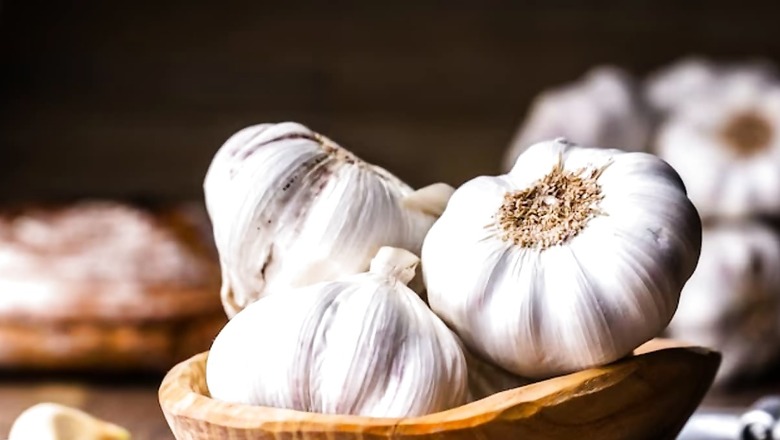
views
After tomato and onion, garlic prices are now witnessing a surge with the rates doubling in the past few days. The garlic prices have touched Rs 400 per kg in some areas, as the supply of the spice has been hit due to crop damage amid extreme weather conditions.
In some retail markets in the country, garlic has been selling at Rs 300-400 per kg. According to an Economic Times report, the wholesale prices have also surged to Rs 130-140 kg in various markets. However, high-quality garlic is being sold at Rs 220-Rs 250 per kg in the wholesale market.
According to a TOI report quoting APMC traders, the situation is unlikely to improve in the near future.
Why Are Garlic Prices Rising?
The garlic prices are currently on the rise due to saturated stock and scanty production on account of insufficient rainfall during monsoon. Unseasonal rainfall due to Cyclone Michaung in parts of India also led to crops being destroyed.
“We have to depend on supply from Gujarat, Rajasthan and Madhya Pradesh that has been an expensive affair,” Ashok Valunj, director of Mumbai APMC, told Times of India.
Experts said the prices are expected to continue to rise till new yield comes to the market, which is likely by the end of the month.
Recently, prices of onions and tomatoes also saw a significant jump due to lower rainfall during this monsoon. Tomato prices in July this year hit as high as Rs 250 per kg in various parts of the country. Onion prices also rose recently to around Rs 60 per kg.
Steps Govt Is Taking To Control Price Rise
Last week, the government banned onion exports till March next year after the retail sales price of the kitchen staple crossed Rs 80 per kg in the national capital and the prices in mandis remained around Rs 60 per kg.
The government last week also tightened wheat stock holding norms for wholesalers, retailers, big chain retailers and processors, on order to curb the hoarding of wheat and to check its price rise. Food Secretary Sanjeev Chopra said the wheat stock limit has been reduced to 1,000 tonnes from the existing 2,000 tonnes for traders/wholesalers.


















Comments
0 comment